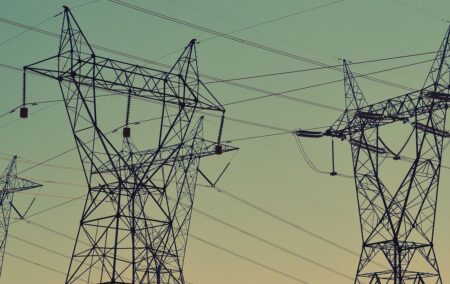The generation, transmission, and a large percentage of the distribution of electricity in South Africa is currently carried out by Eskom, which is a vertically integrated public enterprise. Local authorities carry out the balance of the distribution of electricity.
The actual and persistent threat of power shortages and the current frequent abrupt termination of power to certain areas (blackouts) demonstrate that to maintain the state electricity monopoly in its current form is not in the best interests of electricity consumers, the employees of Eskom, or the government. There is a general consensus that a method has to be swiftly found to end the threat of rolling blackouts and build in a safety margin between minimum expected electricity supply capacity and potential maximum electricity consumption.
The avoidance of blackouts is the first and most important objective, which can be achieved by implementing either or both of two policy options which have diametrically opposite effects on electricity consumers.
The first and most desirable option is to bring about a rapid increase in the supply of electricity to satisfy the needs of all consumers, especially the needs of the large-scale industrial electricity users, but without depriving other electricity users, including domestic consumers.
The second option, which has huge negative consequences for the economy, would be to continue the current ‘blockade path’ and to retain and extend it. Apart from the “voluntary” reductions, there are firms that are punished for “excessive” use of electricity, and others that are denied access to electricity for new industries, property developments and even the building of new homes.
The cost in production and development loss of the second option, which South Africans have been forced to adopt, is enormous. The first option, to increase supply as rapidly as possible, is without doubt essential to avoid stalling the economy and doing harm to economic growth that will never be made up.
Increasing electricity supply
Inadequate progress has been made in increasing the country’s electricity supply.
There appears to be no good reason why the government did not, in good time, allow independent power producers to build generation plants and thereby increase the security of the country’s power supply over the preceding two decades.
Delays have already resulted in huge economic losses. Add to this the escalating costs resulting from power outages and the capital investments that electricity users have made in back-up plants to keep their equipment operating and the lights on.
If electricity generation, transmission, and distribution had been in private hands, with no regulatory barriers to entry preventing competitors from entering the market, this situation would not have arisen.
The need for additional electricity generation capacity was identified in good time – by the end of the 1990s – but because of the existence of regulatory barriers to entry, alternative power producers were prevented from providing the required additional capacity. Today, still, there is no mention of allowing private generators into the coal or nuclear spaces.
There is no point in dwelling on past errors but there is every reason to ensure that the problem of insecurity of supply of electricity is resolved as soon as possible. There is also every reason to establish an electricity supply environment that will ensure that the current disastrous electricity insecurity, once addressed, never again occurs.
An alternative electricity supply environment
An alternative electricity supply environment that will ensure that there is no repetition of the existing perennial threat of electricity blackouts must necessarily emulate the most successful arrangements operating in other countries.
There is no doubt that private investment and management of electricity generation, transmission, and distribution must play an important role.
The most important reasons for this are the critical role played by competition in ensuring the lowest prices, timely investment, availability of capital, continuity of supply, and choice of providers available to consumers.
Independently owned and operated transmission grid
Of all the features that appear to provide an assurance of smooth operation, an independently owned and operated high voltage transmission grid appears to be the most important.
The entire grid need not have one owner. Parts of it can be independently operated, but the North American Electric Reliability Corporation (NERC) in the United States has demonstrated that independent supervision of the grid and its operation is essential to protect its integrity. NERC is responsible for supervising connected grids that cover much of Canada, the US, and Mexico.
It is essential that objective rules be established by participants for ensuring that the integrity of the grid is maintained. It is also essential that any generator of electricity who abides by the rules should not be prevented from utilising the grid to sell electricity to customers. Similarly, purchasers of electricity who follow the rules should not be prevented from drawing electricity off the grid.
There is consequently a strong case for Eskom to divest itself of ownership and control of the transmission grid. Sale of the grid to private purchasers would supply much-needed capital to finance the building of new power stations or to pay off debt and reduce the burden on the government, taxpayers, and electricity customers.
[Image: SnapwireSnaps from Pixabay]
The views of the writer are not necessarily the views of the Daily Friend or the IRR
If you like what you have just read, support the Daily Friend

